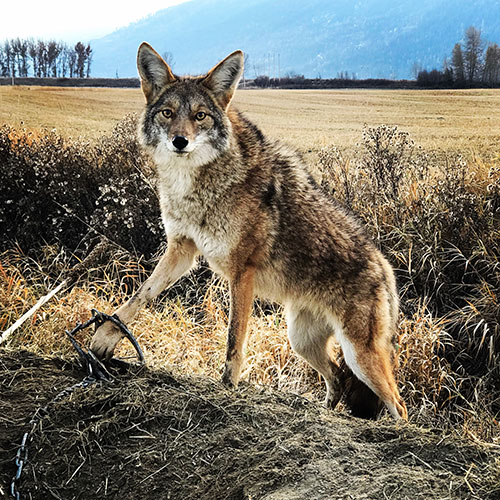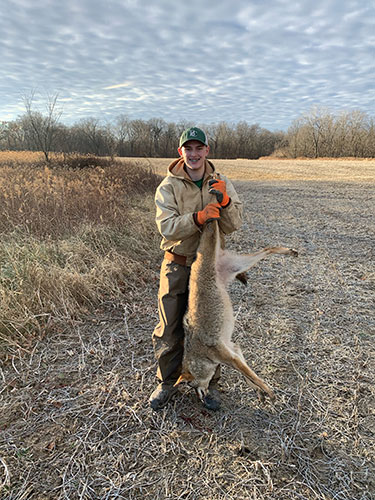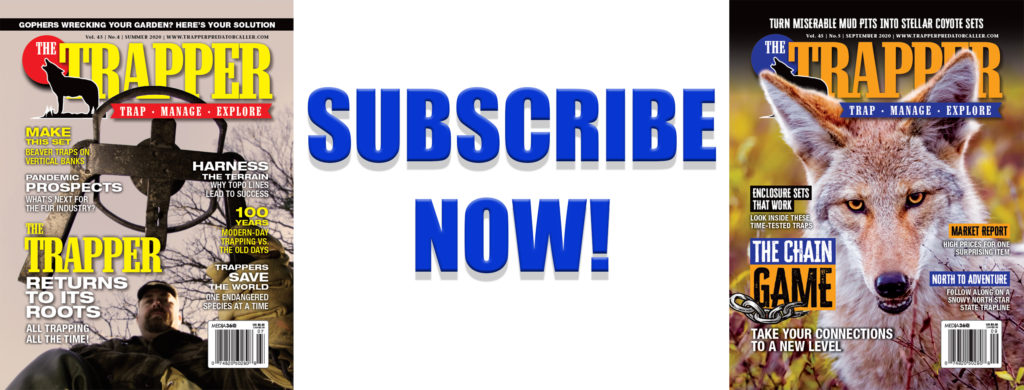By Steve Bartylla
One of the more painful parts of the learning curve that most of us endure when learning the art of trapping is the emotion-changing tide that finding an empty, snapped trap surrounded by prints and a worked set brings with it. With a snap of the fingers, a trapper goes from brimming with confidence that the painstakingly crafted sets will produce, to feeling like an utter failure. Grinding salt into the open wound, is when one doesn’t even have a clue what to do about it, other than remake and hope to get blindly lucky.
Well, let’s change that. Here are the best methods that I’ve found for dealing with trap-wise predators, although the general principles apply to most any furbearer.
Searching For Greener Pastures
When longlining for cash, to be honest, one of the more effective methods of dealing with this problem was merely pulling up from the area and moving on. Trap-wise predators aren’t behind every tree, but they’re not exactly urban legends, either.
Educated furbearers can be a truly frustrating challenge and take up time that we don’t have to spare. When that’s the case, it’s often most productive to merely take the loss and move on to greener pastures and less-pressured targets.
Rearranging the Furniture
Unfortunately, management trappers don’t really have that luxury. Although our motives may vary, we’re generally striving to control populations in specific areas. Taking our ball and going home isn’t a great option.
In this case, merely shifting the locations, types, scents and baits used at the sets can be a good idea.
When doing so, be doubly certain that the traps are odor-free, and that you take odor control as seriously as realistically possible. At the same time, be sure to bed those traps as solid as you can, since odors and tippy traps are really the two biggest reasons for dug-up traps.
Setting a Trap
Of course, trappers can always try to outsmart the one that’s outsmarting us. That begins, again, with having a couple of odor-free traps and treating our own odors very seriously. We’re also going to refresh with the same lure and bait that the set originally had.
The first choice is to either leave the traps snapped or to remake the set. Now, odds aren’t great that we’ll catch the trap digger at the same set with the same scent and bait. They’ll likely dig up the traps again.

No matter the style of foothold trap you choose, a center-mounted D-ring and chain length appropriate for the type of anchor are key elements to a good chain rig. Photo credit Toby L. Walrath.
With that being said, there’s often more than just that one furbearer in the area, and I sure wouldn’t mind catching them, either. So, I typically remake the set with the same traps that were dug up.
Then I’ll make one or two unscented, unbaited scent-post sets, with the trap blended in and as rock solid as possible. One scent post will be nothing more than a small tuft of grass that a female could squat over, and the other a more traditional urination post.
The hope is that the trap-wise nemesis will get excited and urinate, before going in to foil our set. With its focus on the previously worked set, the culprit tends not to be as cautious when peeing on the grass or post that’s only about five or so yards away.
Conclusion
Dealing with dug-up sets is a frustrating challenge. Obviously, that’s only made worse when we have no clue how to deal with the issue. Hopefully, some of these methods can help turn the ship around for you as well as they have for me over the years.
— Steve Bartylla is one of the country’s most respected experts on land and habitat management for whitetails and turkeys. He has been a land-management consultant and outdoor writer for more than 20 years, and grew up trapping in Northern Wisconsin throughout his youth and on after his college years. He is also host of “Grow ‘em Big” and “Hunt ‘em Big” shows on Pursuit Channel and YouTube.



